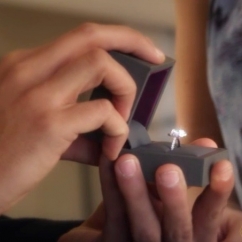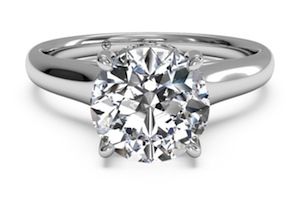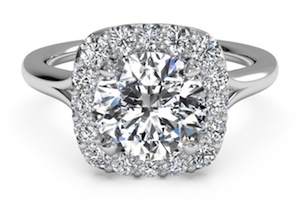Articles and News
Ritani Reports Strong First Year For Bricks And Clicks Model | May 21, 2014 (0 comments)

Seattle, WA—90% of all bridal sales begin online. That figure would give jewelers nightmares, if not outright heart palpitations, if it weren’t for the fact that fewer than 10% of couples ultimately buy their engagement ring online. Still 10% is 10%, and with online sales growing in every category, jewelers can’t afford to be left behind.
Ritani.com launched its new bricks-and-clicks model to the trade in late 2012, and announced additional partners in Las Vegas last year. Sales figures show the company is onto something. In its first year, says president Brian Watkins, Ritani.com shipped $20 million worth of merchandise, and based on projections from first-quarter sales of 2014, is on track to ship $50 million in its second.
“What a company does in the first quarter is 70% of what it does in the fourth quarter,” says Watkins. Ritani’s first quarter of 2014 has already surpassed its fourth quarter of 2013, he says, adding that he knows of no other company that did more in the first quarter than the fourth.
For those who missed the launch, Ritani’s bricks-and-clicks model offers couples the opportunity to shop online, in-store with a retail jeweler partner, or some combination of both. Couples can complete the entire shopping experience online without ever meeting a jeweler—but the local partner still will get a percentage of the sale. Or they can choose the ring online and have it shipped to the partner store to see it in person for committing to buy it. Or they can buy it online and have it shipped in the jeweler’s box.
“Our fulfillment center reads like a history of the jewelry industry with all our partners’ boxes stacked up,” laughs Watkins.
Ritani.com’s core customer is an affluent Millennial male, age 25-35. The typical ring sale is around $7,000, and most are still very traditional round brilliant solitaire, 0.75 to 1.50 ct., G-VS quality with the best cut possible, says Watkins. Other popular styles include the halo setting and cushion cut diamonds. The brand also has amped up its advertising, both digital and traditional.

Classic solitaire, above, is the best-selling style, but a halo setting is also very popular, below.

“The best performing traffic is unpaid,” says Watkins, but the brand does utilize paid search. Organic search only comes from those who know the brand—possibly because of its presence in places like Bloomberg or its new national TV advertising campaign which kicked off this spring on heavily-indexed male programs such as the NFL draft and which the brand will continue to test programs and time slots to find the most effective.
Watch a video of the new commercial here.
Jeweler Steve Padis of Padis Jewelers in San Francisco, CA, is one retail partner who’s extremely pleased with the Ritani brand’s results. It’s not his top bridal brand—that’s still Tacori by a huge margin, he says—but sales of the brand are up dramatically and in one year Ritani has shot up from one of his lower performers to being tied with Verragio and Scott Kay as his second-strongest bridal brands. But more importantly, it’s brought in a host of customers whom he believes never would have shopped with him otherwise.
For example, he cites one customer who literally works in the same building. The customer works for AirBNB, the online vacation rental site, whose offices are several floors above Padis’s store. The customer ordered his Ritani ring online.
“He simply didn’t think to go downstairs,” says Padis.
Padis promotes his Ritani business aggressively, using a mix of online and traditional media, including TV. As a result, name recognition is up dramatically, but he still knows that once the customer is in the store, it’s up to his team to keep them there and make them want to come back.
Many have—once these customers get over the threshold and discover they like shopping at Padis, it’s driven sales of wedding bands and even push presents, he says.
“These are customers we would never get in the store. But now we can start to help re-educate them to come back into a retail store.”
Despite the proliferation of online information available about diamonds, Padis still finds customers don’t know enough to feel confident. It’s not like a TV, where they can get a serial number and go compare prices; they still like to touch and feel and the buy online/pick up in store model works really well for that.
He also appreciates that his store gets credit for sales in his chosen zip code even if they never meet or see that customer. “I get a check from time to time, and customer information,” he says. Half to two-thirds of those are people he’s never seen before, and one-third to one half of those will come in.
“Once they’re in the store, it’s up to us to convert them to customers.”
Where many jewelers only grudgingly admit that online sales are a bigger and bigger part of the retail picture, Padis is sanguine about it.
“Look, the online margin isn’t like other margins. We do understand that. But it’s still nice to get some of that, especially when Blue Nile’s goal is to put jewelers out of business.” The staff initially had a hard time with [lower margins], he says, until they realized that these were customers they wouldn’t see at all otherwise. But as a result of the digital world, Padis also now employs staff specifically dedicated to social media.







